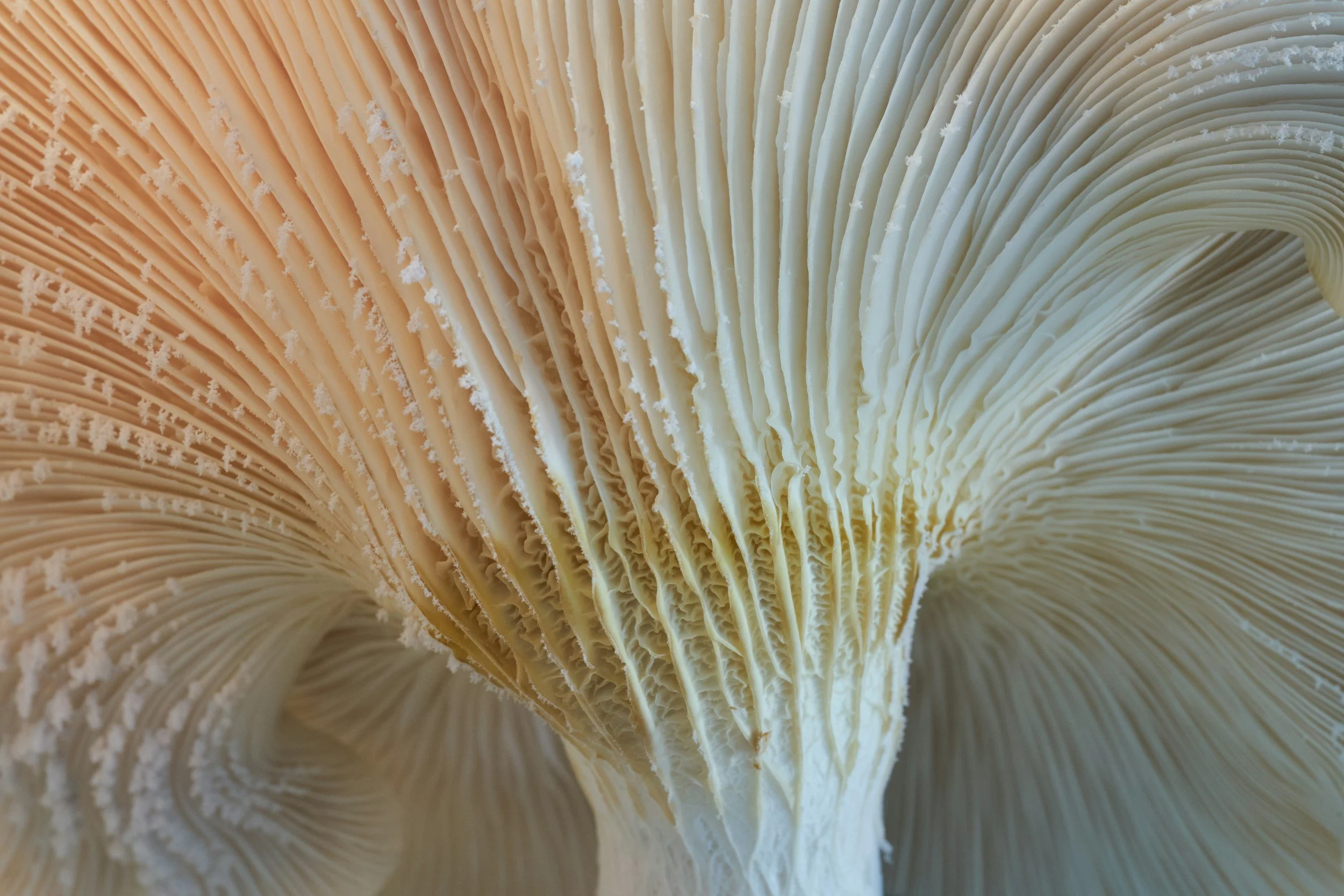Mycelium Dreams: How Fungi Are Reimagining Luxury
Luxury has always been about touch.
The supple pull of calfskin. The whisper of silk. The satisfying weight of something made to last.
But a quiet revolution is taking root beneath our feet - literally. Across the world, in darkened labs and mushroom farms, designers and biotechnologist’s are cultivating mycelium, the root network of fungi, as a new material for fashion’s most coveted goods.
Let’s dive in! 👇
What Exactly Is Mycelium?
Mycelium is the vast, thread-like structure that forms the living body of fungi, a natural web that connects soil, plants, and decay into one breathing ecosystem. In nature, it breaks things down. In the lab, it’s being built up.
By feeding mycelium agricultural waste under controlled conditions, researchers can “grow” it into dense, flexible mats that, once processed and tanned, look and feel remarkably like leather. Companies such as Bolt Threads (makers of Mylo™) and MycoWorks (creators of Reishi™) have pioneered these methods, turning spores and substrate into supple, workable material.
From Spores to Studio:
The Birth of Fungal Luxury
The process reads like science fiction but feels more like craft.
Each sheet of mycelium grows in a matter of days, not years, like livestock. It can be shaped to specific dimensions, reducing waste, and finished using dyes and treatments that bring out a luxurious tactility.
Stella McCartney, long a champion of ethical fashion, unveiled a handbag made from Mylo™ in collaboration with Bolt Threads. Hermès worked with MycoWorks to produce the Victoria travel bag, its familiar form reimagined in Reishi™. Balenciaga followed, debuting a hooded coat grown from mycelium leather called Ephea.
These aren’t eco experiments hidden in side collections; they’re high-fashion statements. Evidence that sustainability can look, and feel, aspirational.
Why Mycelium Matters
Fashion’s traditional materials come at a cost. Animal leather depends on resource-heavy agriculture and chemical tanning; synthetic leather depends on plastic. Mycelium offers a third path; one that is renewable, rapidly grown, and potentially biodegradable.
It also answers a spiritual hunger in design: the desire to reconnect with living systems rather than exploit them. Each mycelium sheet carries the subtle memory of the organism it came from, a texture that feels alive, a softness that breathes. In a moment where consumers are questioning what luxury stands for, fungi offer a poetic answer: resilience, regeneration, and quiet intelligence.
Challenges Beneath the Surface
Of course, it isn’t perfect.
Scaling mycelium materials to industrial levels is costly. Some still rely on synthetic coatings for durability. Others are locked in patent races between biotech firms and heritage houses. The tension between innovation and authenticity - between lab and atelier - remains.
But even with these growing pains, the cultural shift is unmistakable. Luxury is no longer defined only by rarity or craftsmanship; it’s also about responsibility and imagination.
Nature as Muse, Material, and Metaphor
There’s something profoundly poetic about it all: the idea that fungi, the world’s great decomposers, are now giving new life to an industry built on reinvention.
In the language of mycelium, everything connects. Waste becomes resource. Death becomes growth. It’s a lesson fashion has needed to learn for a long time.
Maybe this is what the future of luxury feels like; not sterile or synthetic, but alive.
A soft, mushroom-born fabric that carries the scent of soil, the intelligence of networks, and the quiet promise that beauty and sustainability don’t have to be opposites.
These are the mycelium dreams reshaping the seams of luxury.


